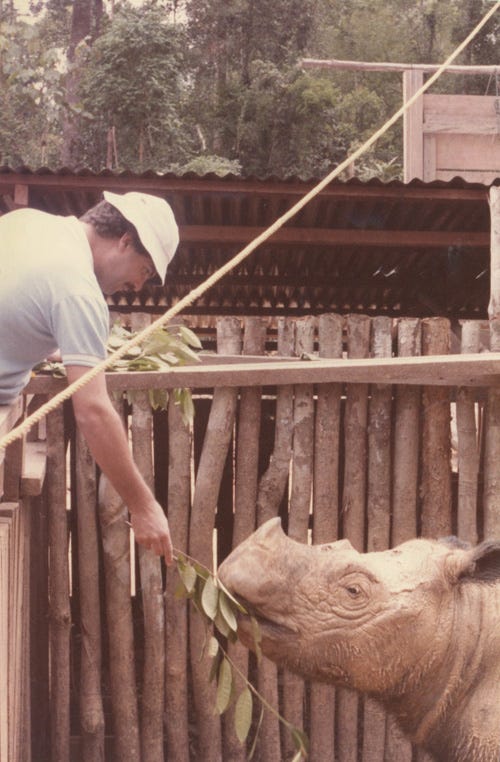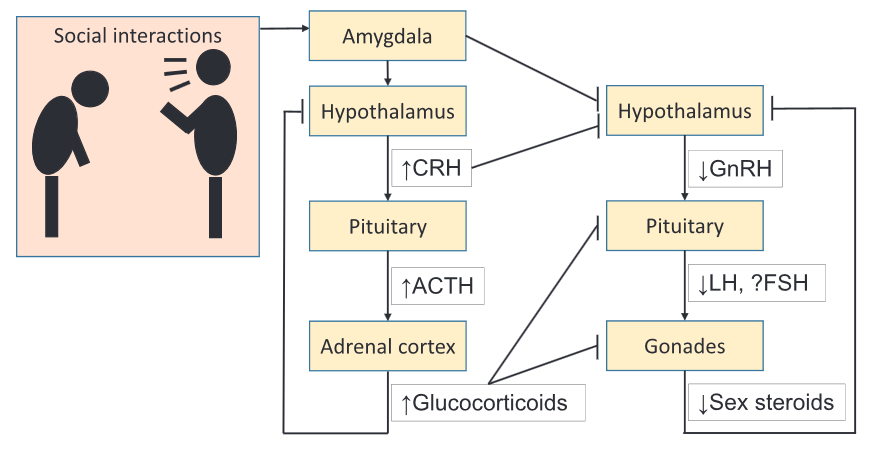Does the concept of ‘pollution’ match the complexity of human–biosphere interactions?
Let’s not oversimplify by blaming everything on pollution—we can do better intellectually. Multi-generational disconnection from nature may erode our very humanity, including the ability to reproduce.
Humanity has achieved a great deal in science and technology—we have even traveled to outer space. However, unlike natural ecosystems that produce virtually no waste and keep their environment in optimal conditions, we continuously generate garbage and, despite all our intellectual accomplishments, have not yet figured out how to cope with it.
Still, there has been some progress. We did notice the problem of pollution and realized that many substances accumulating around us may not be good for our health. Some of them were banned, others continue to build up. Yet, as we seem to prefer linear thinking, once we've identified a problem—pollution—we tend to treat it as the explanation for everything (from climate change to IQ decline), overlooking the inconvenient possibility that the root of all problems may lie elsewhere.
While many people remain focused on the 2.0°C planetary warming target, others have also noticed a potentially greater threat: the rapid decline in human fertility. In males, for example, the global average sperm count (whatever the exact number may be) has been dropping at an alarmingly accelerating rate—so much so that the point of zero fertility is already visible on the horizon before the end of this century. Let me share a few somewhat scattered thoughts on how this might connect to other existential challenges facing humanity—beyond just pollution.
Fig. 2 from Levine et al. 2023 “Temporal trends in sperm count: a systematic review and meta-regression analysis of samples collected globally in the 20th and 21st centuries”. The global mean sperm count has declined by more than a half in the last half a century.
Learning from our animal brethren
Have you ever wondered why zoos exist? For a reason similar to why we have carousels and swings. Carousels and swings help children develop their vestibular system through movement—so kids love them. Zoos, on the other hand, fulfill a different genetically encoded need: the need to connect with the living world in order to develop normally. But modern children don’t get much of that connection in urban environments, so they’re brought to zoos to see animals—behind bars.
Now, if we turn to animals in zoos, who are as deprived of their natural environments as urban kids, we note from the vast scientific literature that many don’t reproduce at all or reproduce very poorly. Meet Torgamba, a Sumatran rhino captured in 1985 at the age of six. He spent over ten years in a zoo in England before eventually being repatriated to Sumatra.
Francesco Nardelli and Torgamba (read the Mongabay piece by F. Nardelli on crucial efforts to save the rhino population)
In a 2008 study, Agil et al. measured Torgamba’s sperm counts to find that
Sperm concentration was (143-333) × 103 sperm/ml. The quality of the sperm was low with only approximately 1% of them moved forward slowly. Approximately 80% of the spermatozoa were immature (prox. cytoplasmic droplet) with head (macro-, microcephalic) and tail abnormalities (broken tail).
Another study, by Carlstead et al. (1999), found that those rhinoceros that were kept in enclosures with transparent walls and could see, if not move across, large areas, fared better in terms of reproductive health than those kept in closed cages.
Learning from the past
Below is a picture of the artificial universe created for mice by Dr. John B. Calhoun in the late 1960s.
It quite reminds one of the living conditions of many modern people.
Mice were provided with ad libitum food, water, and space for nesting. The mouse universe, initially inhabited by a pair of mice, grew rapidly at first but then declined dramatically—eventually ending in complete extinction.
Dr. Calhoun presented his findings to the Royal Society of Medicine in late 1972. Here I reproduce the conclusions of his study:
The results obtained in this study should be obtained when customary causes of mortality become markedly reduced in any species of mammal whose members form social groups. Reduction of bodily death (i.e. 'the second death') culminates in survival of an excessive number of individuals that have developed the potentiality for occupying the social roles characteristic of the species. Within a few generations all such roles in all physical space available to the species are filled. At this time, the continuing high survival of many individuals to sexual and behavioural maturity culminates in the presence of many young adults capable of involvement in appropriate species-specific activities. However, there are few opportunities for fulfilling these potentialities. In seeking such fulfilment they compete for social role occupancy with the older established members of the community. This competition is so severe that it simultaneously leads to the nearly total breakdown of all normal behaviour by both the contestors and the established adults of both sexes. Normal social organization (i.e. 'the establishment') breaks down, it 'dies'.
…
For an animal so simple as a mouse, the most complex behaviours involve the interrelated set of courtship, maternal care, territorial defence and hierarchical intragroup and intergroup social organization. When behaviours related to these functions fail to mature, there is no development of social organization and no reproduction. As in the case of my study reported above, all members of the population will age and eventually die. The species will die out.
For an animal so complex as man, there is no logical reason why a comparable sequence of events should not also lead to species extinction. If opportunities for role fulfilment fall far short of the demand by those capable of filling roles, and having expectancies to do so, only violence and disruption of social organization can follow. Individuals born under these circumstances will be so out of touch with reality as to be incapable even of alienation. Their most-complex behaviours will become fragmented. Acquisition, creation and utilization of ideas appropriate for life in a post-industrial cultural-conceptual-technological society will have been blocked. Just as biological generativity in the mouse involves this species' most complex behaviours, so does ideational generativity for man. Loss of these respective complex behaviours means death of the species.
This dismal outlook—which, incidentally, points quite clearly to increased longevity as a major factor in the fertility decline of subsequent generations—was not exactly embraced by the audience. This is evident from the discussion transcript published alongside the study (I highly recommend reading both—see Calhoun 1973—as it was our present, then future, that was being debated). Could there not have been a less complicated explanation for the mice’s extinction?
The Chairman thought Dr Calhoun had not mentioned pollution and asked what remains the animals left and how these affected the situation?
Plastic pollution or urbanization? DeepSearch versus ChatGPT
Professor Ugo Bardi, concerned about the approaching demise of the human civilization (his recent book “Exterminations” can be highly recommended), also thought about pollution. He could not find a scientific study that would explore the correlation between the declining sperm counts in human males and environmental plastic pollution. So he asked the DeepSearch AI (10 USD/month) to explore the problem and published the results on his blog The Seneca Effect as “Human Extinction Ahead: How Many Years Left?”
Here’s what DeepSearch generated:
Each point corresponds to a year, spaced at five-year intervals from 1973 to 2018. As plastic production (presumably per year) increases, average sperm count steadily declines. DeepSearch reported a Pearson correlation coefficient of -0.977 for this linear relationship.
I asked ChatGPT (free version) to inform me about global urbanization (the proportion of people living in cities) for the same time period, from 1973 to 2018 in with five years’ interval. Here’s what it generated (the data, as I checked, come from https://www.indexmundi.com/facts/world/indicator/SP.URB.TOTL.IN.ZS and originally from the United Nations Population Division):
Year Urban Population (%)
1973 37.19%
1978 38.53%
1983 40.50%
1988 42.31%
1993 44.11%
1998 45.94%
2003 48.14%
2008 50.65%
2013 53.01%
2018 55.28%
2023 56.90% (estimated)
Then I gave ChatGPT the sperm count data from Ugo’s graph and asked for a regression analysis. The result was quite overwhelming:
ChatGPT seemed to be impressed as well:
The Pearson correlation coefficient between urban population proportion and sperm count over the selected years is approximately -0.999 (cf. -0.977 from Ugo’s DeepSearch— AM), with a p-value near 0 (1.39×10⁻¹¹). This indicates a very strong negative correlation: as urbanization increases, sperm count tends to decrease.
Urbanization should be seen as a comprehensive measure of our detachment from the natural world—reflected in the loss of space, contact with other animal and plant species, natural sounds, and more.
Physiology and biochemistry of urbanicity
In his review “Population Numbers and Reproductive Health”, Suvorov (2021) noted:
Many authors have suggested that social defeat and chronic social stress are factors linking urbanicity with mental health (73-75, 77). This hypothesis was tested in a recent study that compared neural processing of acute social evaluative stress in populations of cities (> 100 000 inhabitants), towns (> 10 000 inhabitants), and rural areas (76). Using functional magnetic resonance imaging, this study demonstrated that city-dwelling is associated with increased amygdala activity. In addition, upbringing in an urban environment affects the perigenual anterior cingulate cortex—a region that regulates amygdala activity, negative affect, and stress (76). Another study demonstrated that urban upbringing (78) results in a blunted response to stress, a likely indicator of higher chronic stress levels in city populations. Given that two-thirds of the global population is expected to live in urban areas by 2050 (79), population growth and urbanization may work in concert to slow down reproduction.
Fig. 1 from Suvorov (2021). Simplified explanation of the causal chain connecting population densities with reduced reproduction via neuroendocrine signaling. CRH, corticotrophin-releasing hormone; ACTH, adrenocorticotropic hormone; LH, luteinizing hormone; FSH, follicle-stimulating hormone; GnRH, gonadotropin-releasing hormone.
Suvorov (2021):
How does our organism receive information about our population numbers? It is logical to assume that our brain registers encounters with conspecifics and in case of too many encounters transforms this information into stress signals. Today, humans have significantly advanced their ability to interact socially by the development of technology. Even if someone lives a life of a hermit and is not surrounded by friends, family, coworkers, and strangers, he or she may remain connected to the whole world via social networks and other internet services, television, and the telephone. Do these social interactions matter? We do not know, but it will be safe to assume yes, given that they are successful in replacing the majority of physical interactions of the past. If so, we may assume that with the progress of electronic communication technology, subjective feelings of population density exploded, generating the maximum possible response of the stress control cascade. Concordant with the idea that excessive social interactions result in the decreased personalization of these interactions, recent research shows a positive association between the feeling of loneliness and time spent using social media (109). If these speculations have validity, then complete abstinence from social networks and mass media may be a promising candidate treatment for infertility patients.
If someone wonders how the feeling of loneliness could result from too many social contacts, one should again read the study by Calhoun (1973) on mice. For example, in male mice
the behavior disturbances ranged from sexual deviation to cannibalism and from frenetic overactivity to a pathological withdrawal from which individuals would emerge to eat, drink, and move about only when other members of the community were asleep. … Their behavioural repertoire became largely confined to eating, drinking, sleeping and grooming, none of which carried any social implications beyond that represented by contiguity of bodies.
We can observe parallel phenomena in our own world—for example, hikikomori (cf. https://en.wikipedia.org/wiki/Hikikomori). It took several generations of detachment from natural spaces for such conditions to emerge in human society. Unlike in Sumatran rhinos, the effects of habitat destruction in our species appear to be delayed—but no less serious or dangerous.
Final thoughts
Back then in 1972, at one point of the discussion, the Chairman (who seemed to remain of the opinion that the mice mortality was likely due to insufficient sanitation) interrupted Dr. Calhoun and said that
he ought to be careful about this (drawing human inferences — AM). He had been discussing mice, and the Chairman agreed with Professor Mellanby that there were some very strong contraindications. Hong Kong, for example, was a most marvellous population of people living under much higher densities than in east London. He thought the inhabitants to be impressively happy as far as one could see.
In the fifty-three years since the Chairman’s words, Hong Kong’s fertility rate has dropped from 3.3 to 0.7 births per woman.
If we extrapolate the trend line in the above ChatGPT graph, the global sperm count will hit zero when global urban population rises to 70% from the curent 56%.
Biological and ecological systems are incredibly complex, and human culture adds yet another layer of complexity. As the environment people live in drifts further from the natural conditions encoded in our genome, culture can temporarily buffer this disconnection. But unlike genetic information, which is discrete and slow to change, cultural information is fluid and prone to rapid erosion. Over just a few generations, the loss of connection to natural ecosystems can begin to show at the physiological level. Rather than isolating a single factor—be it population density, pollution, noise, or perhaps the missed opportunity of a solitary walk through a spring forest—I believe we need to acknowledge that losing touch with the natural world is fundamentally harming us. It lies at the heart of many of our existential problems.
The prospects for Tombarga’s conspecifics seem grim, as humanity remains unable to prevent the decimation of Earth’s forests. Their environment—and with it, their ability to reproduce—is being wiped out. We humans are still so unaware of our own biological nature that we maintain the illusion that people could reproduce in artificial environments like Mars, even under sterile conditions with zero pollution. But we won’t. Humans are at least as delicately attuned to the natural environment as other animals—and that fine-tuning is erased over just two or three generations of disconnection. We are not just losing natural ecosystems. In losing them, we are quite literally losing ourselves.
PS Discussion of pre-industrial cities
Ugo made the following very thought-provoking comment:
…what should count is not the total number of people living in cities, but -- if anything -- how densely populated cities are. And, in our times, cities are less dense than they were in -- say -- Medieval times. Humans have been living in densely packed towns from Sumerian times, but that didn't prevent them from reproducing. Calhoun experiments, in my opinion, are not applicable to humans. Mice do not live in cities, never did. We, instead, have been living in cities for 5000 years, at least. Anyway, there is a whole chapter on Calhoun experiment in my upcoming book "The End of Population Growth" -- I'll cite your results!
Here’s my response to Ugo’s counterarguments:
1. “We, instead, have been living in cities for 5,000 years, at least.”
Only a small proportion of humans lived in large cities at any time—for the simple reason that most people had to work in the fields to produce food. For example, in the Roman Empire, at best, around 10% of the population lived in major urban centers.
2. “Humans have been living in densely packed towns since Sumerian times, but that didn’t prevent them from reproducing.”
In all pre-industrial eras, larger cities were effectively demographic sinks, where mortality consistently exceeded fertility due to disease and other stressors -- indicating that such high densities are biologically unsustainable for our species. These cities were sustained only by constant immigration from rural areas. If humanity had relied solely on cities for reproduction, we would have long since disappeared.
3. “what should count is not the total number of people living in cities, but—if anything—how densely populated cities are.”
What should count—for what purpose? Most pre-industrial “cities” were small in absolute terms, ensuring close proximity to the natural environment.
Take Pompeii, for instance: it had an estimated population of 11,132 and a density of 16,615 people per sq. km. That’s less than one square kilometer in area—meaning green space was always just a few hundred meters away. Children could easily access nature and develop in healthier surroundings.
4. Rome, which was much larger in scale, suffered from many of the same problems that plague modern cities.
Mortality exceeded fertility, but also fertility itself was diminished relative to the rest of the population. Otherwise, there would have been no need for Augustus—and subsequent emperors—to enact laws penalizing childlessness and incentivizing larger families.
5. Finally, Calhoun’s findings point to a unique combination of two modern anomalies: unnaturally high population density and unprecedented longevity.
This combination is something no human society had faced before. Not only are today’s young people “locked in space,” they are also “locked in time”—unable to step into the social roles of family founders and decision-makers, roles that were traditionally assumed much earlier in life when life expectancy was lower.
You can't fool nature. Having overcome mortality, we are now facing a collapse in fertility—and cities, as ever, remain demographic sinks.
I’ve found the following sources particularly insightful:
Storey, G. R. (1997). The population of ancient Rome. Antiquity, 71(274), 966–978. https://doi.org/10.1017/S0003598X00085859
Knauft, B. M. (1987). Divergence between cultural success and reproductive fitness in preindustrial cities. Cultural Anthropology, 2(1), 94–114. https://www.jstor.org/stable/656398
Cited literature
Agil, M., Supriatna, I., Purwantara, B., & Candra, D. (2008). Assessment of fertility status in the male sumatran rhino at the sumateran rhino sanctuary, way kambas national Park, lampung. HAYATI Journal of Biosciences, 15(1), 39-44. https://doi.org/10.4308/hjb.15.1.39
Calhoun, J. B. (1973). Death squared: the explosive growth and demise of a mouse population. Journal of the Royal Society of Medicine, 66(1P2), 80-88. https://doi.org/10.1177/00359157730661P202
Carlstead, K., Fraser, J., Bennett, C., & Kleiman, D. G. (1999). Black rhinoceros (Diceros bicornis) in US zoos: II. Behavior, breeding success, and mortality in relation to housing facilities. Zoo biology, 18(1), 35-52. https://doi.org/10.1002/(SICI)1098-2361(1999)18:1%3C35::AID-ZOO5%3E3.0.CO;2-L
Levine, H., Jørgensen, N., Martino-Andrade, A., Mendiola, J., Weksler-Derri, D., Jolles, M., Pinotti, R., & Swan, S. H. (2023). Temporal trends in sperm count: a systematic review and meta-regression analysis of samples collected globally in the 20th and 21st centuries. Human reproduction update, 29(2), 157-176. https://doi.org/10.1093/humupd/dmac035
Suvorov, A. (2021). Population numbers and reproductive health. Endocrinology, 162(11), bqab154. https://doi.org/10.1210/endocr/bqab154













I am sorry, Anastassia, but I have to disagree with your interpretation. Not that chatGPT is wrong, but what should count is not the total number of people living in cities, but -- if anything -- how densely populated cities are. And, in our times, cities are less dense than they were in -- say -- Medieval times. Humans have been living in densely packed towns from Sumerian times, but that didn't prevent them from reproducing. Calhoun experiments, in my opinion, are not applicable to humans. Mice do not live in cities, never did. We, instead, have been living in cities for 5000 years, at least. Anyway, there is a whole chapter on Calhoun experiment in my upcoming book "The End of Population Growth" -- I'll cite your results!
I know you mean something broader than just sperm count, but it is worth pointing out that sperm count isn't usually seen as the direct cause of the lower fertility/rate of pregnancy. The direct cause is likely contraception. Right? Now, I totally believe that crampted and ennui-enducing living makes people not want children though.